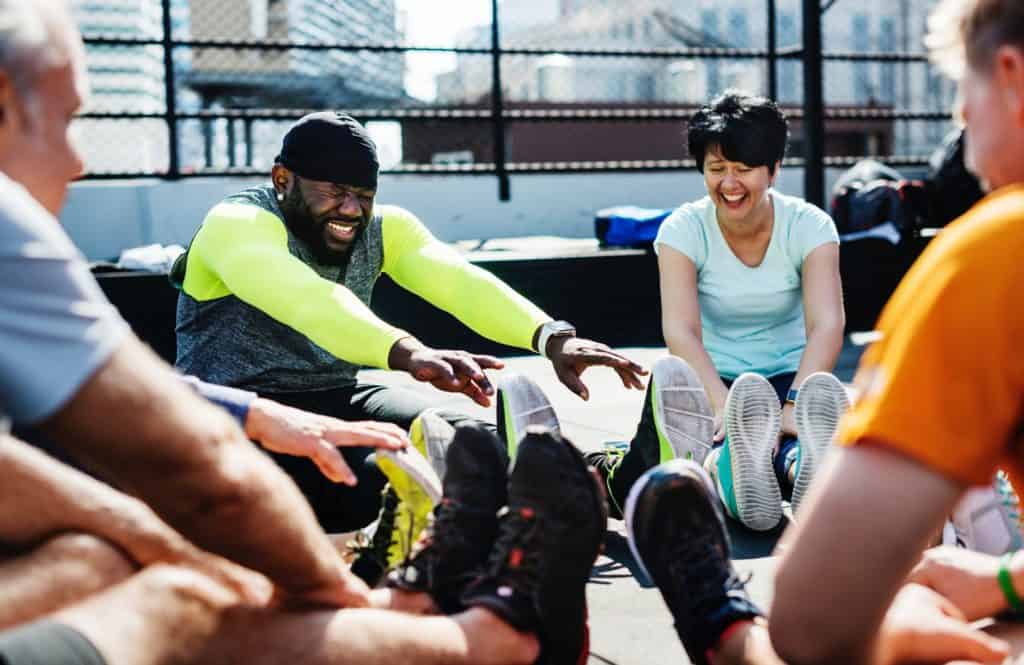Are you constantly slouched over your desk, with your shoulders hunched forward while you struggle to get those worksheets done? Do you experience chronic neck and shoulder pain? If so, you may be suffering from Upper Crossed Syndrome, a condition that affects posture and daily life in surprising ways. It is growing more and more common across the board, from office workers to teenagers.
This syndrome is a common postural imbalance caused by prolonged periods of sitting, poor ergonomics, and a sedentary lifestyle. It occurs when the muscles in your upper body become imbalanced and weakened, leading to a forward head posture, rounded shoulders, and an exaggerated upper back curve.
The consequences of Upper Crossed Syndrome extend beyond poor posture. It can lead to a range of issues including chronic neck and shoulder pain, headaches, reduced lung capacity, and even digestive problems. Additionally, this condition can greatly impact your daily life, hindering your ability to focus and perform tasks efficiently.
In this article, I will delve into the hidden consequences of Upper Crossed Syndrome and explore how it affects your posture and daily life. We will also provide practical tips and exercises to help you correct and prevent this condition, ultimately improving your overall well-being.
What is Upper Crossed Syndrome?
Upper Crossed Syndrome sounds like a terrible, lifelong thing but it’s just your body being out of whack due to sitting too much, slouching, and moving too little. You can fix it with some effort.
Upper Crossed Syndrome happens when the muscles in your neck, back, and chest are not playing nice together. When you sit like a statue staring at screens all day, the muscles that run from your neck to your shoulder (the traps and levator scapulae) go very tight. Same for your pectorals. When combined with weak lower and mid trapezius muscles, the tight muscles in your chest and neck pull your shoulders in and down and your head forward.
The result is you, hunched over, shoulders rounding forward, looking like you’ve aged decades in seconds. Or lost all your confidence. Not a good look. And it definitely does not feel good.
What Causes Upper Crossed Syndrome?
Upper Crossed Syndrome (UCS) doesn’t just fall out of the sky and it definitely isn’t a genetic issue. Your habits, hobbies, and frankly, your laziness, play the leading roles in developing UCS. Here are some common reasons people develop it.
1. Too Much Couch Time: All those hours spent sunk into your couch, controller in hand or engrossed in yet another Netflix binge play an enormous role. Comfort kills more than just motivation. It destroys muscle mass and causes tight areas of the body in this case as well.
2. The Desk-Jockey Syndrome: You spend hours slouched over a keyboard for hours with poor posture and little to no movement, then you wonder why your back’s screaming at you?
Prolonged sitting can lead straight to UCS, so that office job makes you a prime candidate for developing this issue as well. Excessive desk time with poor posture can buy you a one-way ticket to UCS.
3. Skipping Gym, Hitting Snooze: Ignoring those workouts you or your coach built out?
Lack of regular physical exercise or strength training sets the stage for UCS, considering the entire syndrome is based on weak and tight muscles.
4. Too Much of the Wrong Exercises: Crazy for chest days and ditching back day? You’re setting up the stage for imbalance.
You ever see those guys at the gym with huge chests and great arms but rounded shoulders and forward leaning heads? Most likely UCS.
5. Staring at a screen: This is where UCS comes into play for teenagers, adults, office workers, and couch potatoes alike.
Staring at a small screen, like, say, your phone, for hours on end in a slouched position is one of the leading causes of UCS. The zombies you see walking down the sidewalk of any major city most likely have it in varying degrees, but they don’t need it.
Overworking certain muscles, while letting the others laze around, is bad. Appropriate anatomical symmetry is great for aesthetics, but also for avoiding muscular imbalances.
You’re not exactly winning the “healthy life” lottery if any of those are you. With them, you create the perfect conditions for Upper Crossed Syndrome.
Common Symptoms of UCS
Upper Crossed Syndrome (UCS) is doing some funky stuff to your posture. If you are worried about it and want to figure out if you have it, here is a checklist of things to look for. Now, this isn’t a guide to self-diagnosis, but it will help you determine if you need to ask your doctor, physical therapist, or trainer about it or not.
- Forward head.
- Rounded, stooped, forward shoulders.
- Aching in your neck, upper back, and shoulders.
- Headaches, fatigue, jaw pain.
- Low back pain.
- Trouble sitting or driving for long periods.
Obviously, a stack of those issues will cause some impacts to daily life, from pain to mobility issues.
If you have a few of those symptoms it might be worth asking about. There’s still hope to fix it.
Fixing UCS
It doesn’t have to be this way. There are some pretty easy ways to begin alleviating issues and working away from this syndrome. Since the entire issue revolves around weak, tight muscles there are some obvious things you can do every day to heal, such as these stretches:
1. Chest Opener: Stand tall, clasp your hands behind your back, push your arms out behind you, and feel that stretch.
2. The Shoulder Tamer: Gently pull your arm across your chest, grasping the tricep with your other hand. Pull deep and feel the stretch.
3. The Neck Flex: Tilt your head to the side, grab it with your hand from side you are tilting your head towards, and pull gently.
4. Upper Back Stretch: Squeeze your shoulder blades together, like pinching a pencil.
5. Wall Angel: Stand against a wall, bend your elbows, and slide your arms up and down keeping your elbows close to the wall.
Remember, just like with any other exercise, consistency is key. Keep up with these moves and fix UCS!
Prevention Tips for Upper Crossed Syndrome
The best way to approach Upper Crossed Syndrome (UCS) is to avoid it entirely. Prevention is better than the cure. Why wait until it is too late when you can just head it off before it happens?
1. Posture is Your Pal: Stand tall, sit straight, pull your shoulders back. It’ll boost your confidence, others will notice your presence, and your shoulders/upper back/neck will thank you.
2. Desk Job? No Problem!: Remember to get up and stretch every hour or so and keep your computer at eye level. Movement and positioning is the best prevention and cure for UCS, so put in the effort.
3. Active Life = Happy Life: Regular, balanced exercise will keep you going strong. Not only will you build lean mass, but your muscles will remain flexible and balanced, keeping you out of UCS’ way.
4. Rest & Recover: Find a comfortable sleeping position for a relaxed neck and shoulders. Try to sleep as flat as possible on your back. Stacking pillows under your head, stomach sleeping, or curling up in a ball are all a recipe for developing issues.
Need some help?
Shape Success, Live Exceptionally
Hit that button, and get started today.
Help for Upper Crossed Syndrome
Beyond stretches and exercise alone, you can bring in some outside help if you need to. Trainers, physical therapists, doctors, and masseuses are all capable of helping you overcome Upper Crossed Syndrome. The severity of your case may dictate whether you need some help with either a diagnosis or treatment.
Any of those people should be able to help you determine if you have UCS and provide you with ways to avoid it or treat it.
Wrapping it All Together
You’re now equipped with a treasure trove of knowledge on how to combat Upper Crossed Syndrome (UCS).
From mastering effective stretches and exercises, to embracing clever prevention tips, and not forgetting to lean on the know-how of pros—your journey to overcome UCS is well underway.
It’s not about the speed, but the consistency. Every stretch, every active moment, and every posture check matter. Let’s take small, steady steps towards a healthier, more active you.
Let Us Help You Out
I want to help you achieve better physical and mental health through exercise. Check out the plans I offer to my clients and see if you could benefit from working with me. If you have questions, you can always contact me through the Contact Us page.
Personal trainers, like myself, can help guide you on your pathway towards reaching your fitness goals, whether that is getting bigger, stronger, faster, more lean, or just generally feeling better.
If you choose to join one of my programs I’ll get you setup with a periodized workout plan, supplement information, and advice on nutrition to help you reach your goals. I also do advisory services that guide you along and answer questions you have if you don’t want a fully customized service.
The only thing you need is some motivation and a willingness to change some old habits.
Get into contact with me to find out what, if any, membership is right for you.


